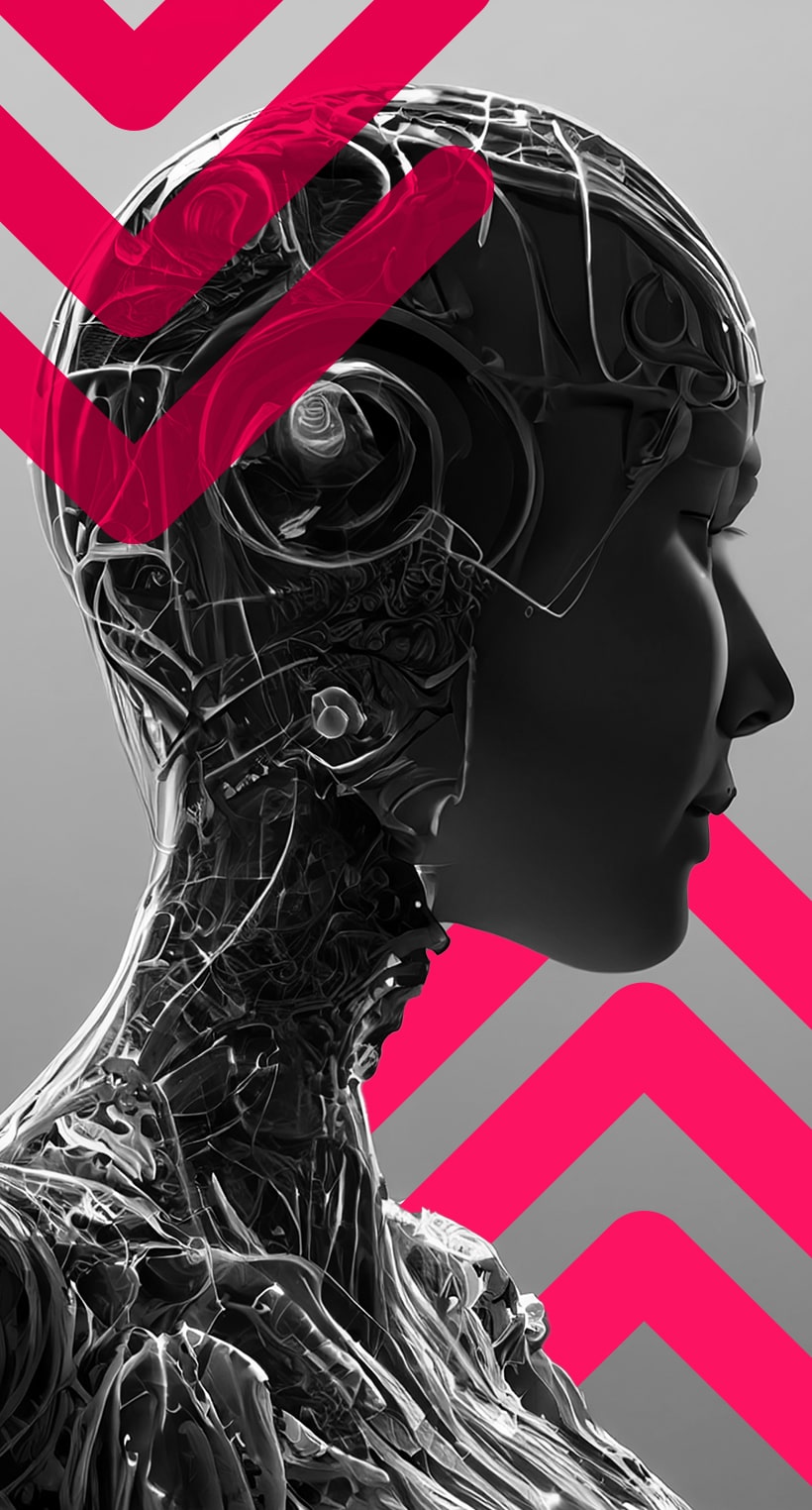In the age of digital transformation, cybersecurity has evolved from a luxury associated with international tycoons to an absolute necessity for individuals and corporations of every size. The online world presents a vast landscape of threats that can potentially compromise sensitive data, corrupt transactions, and disrupt operations. To effectively combat these ever-evolving cyber threats, traditional methods of safeguarding digital assets are no longer sufficient. This is where AI-UK steps in to maximise the potential of Artificial Intelligence (AI) as a powerful ally, augmenting human expertise and revolutionising the cybersecurity landscape.
The Limitations of Traditional Cybersecurity
Navigating the labyrinth of modern cybersecurity is a complex endeavour. Cyber threats continue to evolve, demanding a cybersecurity workforce as adaptable and versatile as the adversaries they face. Traditional cybersecurity approaches, once sufficient, now fall short due to these factors:
- Static Rule-Based Systems: Traditional cybersecurity solutions lean heavily on rule-based systems that can only detect known threats. They struggle to identify new, previously unseen attacks, which cybercriminals often use to exploit vulnerabilities.
- Data Deluge: The sheer volume of security data generated daily is overwhelming for human analysts to process manually. This often leads to alert fatigue, where critical threats may be missed amidst the noise.
- Lack of Context: Traditional systems may flag numerous alerts without providing context. Understanding the criticality of a threat and its potential impact on the organisation can be challenging.
On the other hand, AI offers enhanced data processing and responds to that data in a matter of seconds, adapting as more data comes in and informs both its inputs and outputs. The two pivotal reasons AI significantly elevates cybersecurity are:
- Data Analysis and Pattern Recognition: AI-powered cybersecurity tools can process and analyse large volumes of data in real-time, identifying patterns and anomalies that might indicate a potential threat. This analysis goes beyond rule-based systems to detect previously unknown attacks.
- Personalised Threat Assessment: AI can assess an organisation’s unique risk profile by considering factors such as industry, size, and specific assets. This allows for the customisation of security measures to address individual vulnerabilities.
AI-Powered Solutions for Threat Detection, Remediation, and Prevention
At AI-UK, we witness on a daily basis how AI-driven systems can keep an eye on the behaviour of both users and networks, recognising any unusual patterns that could be a sign of a security breach. The mechanism behind this process is simple but effective: AI works by thoroughly analysing individual behaviour and the behaviour of servers, file shares, and potential adversaries. In turn, these systems can identify deviations from regular activity and flag them for deeper inspection. This methodology is known as behavioural analysis, and it’s a valuable tool for detecting potential threats to your cybersecurity (for an in-depth analysis of this concept, head over to this article on behavioural analysis).
Once enough data is gathered and scrutinised, our AI processing employs predictive analytics to identify emerging threats based on historical data and current trends, enabling organisations to take proactive measures and mitigate risks before they escalate. Fancy as it may sound, this type of AI is really another software like the hundreds you already use on a daily basis for your business and even your personal use.
Have you started working out the advantages? One of the most exciting advantages of this in-real-time ability of AI to dissect vast amounts of data is further its use in automated incident triage systems. In simple words, AI can automatically categorise and prioritise security incidents, ensuring that the most critical threats are addressed in the right order of priority. The result is reduced response times while minimising potential damage. Of course, it is important to keep in sight the peripheral threats while urgent ones are being handled with predefined remediation actions… and, you guessed it! AI excels at that. This can include isolating compromised systems, revoking access privileges, or blocking malicious IP addresses. Or, as we like to put it for us mortals: it’s a very tight shield.
Beware, however, that not all threats come from the outside! Like in any mystery worth its ink, good detectives must look within as well. AI’s potential to become an unbiased system (with proper training, but more on that later) makes it an optimum ally for analysing user activities and behaviours to identify suspicious actions that may indicate insider threats. The plot thickens indeed, except our particular AI detective is a little too perceptive to keep us on the edge of our seat (it had to have its downsides, we suppose). This ability can be key to help organisations prevent and respond to incidents involving employees or trusted partners. AI is able to detect minimally unusual patterns of access and data usage, flagging potential insider threats even when they are not explicitly malicious but may pose a risk. Sorry, Sherlock, but being able to know the motive and the suspects even before the crime has happened? AI really takes this one home.
Efficiency Gains in Automation of Routine Tasks
You might be interested to learn that AI can parse (or, in other words, convert your log data into a standard format so that your system can read, index and store it) as well as being able to analyse log files from various sources to identify unusual or suspicious activities. What this means in the tangible world, is it eliminates the need for manual log inspection (a particularly cruel form of corporate torture), saving time and reducing the risk of missed threats (and probably justified disgruntlement). This increase in efficiency allows employees to utilise their time more productively, in a stress free environment that makes the most of their unique input as creative individuals.
From that employee just freed-up from excel sheets, to the directors revelling in increased productivity, this symbiosis enhances decision-making across the board. By receiving real-time insights into the security posture of their organisation, cybersecurity teams can make informed decisions more quickly and accurately. After all, AI can correlate data from multiple sources to provide a holistic view of an incident, enabling more specialised incident response. Case open; case closed.
It is important to realise that these benefits are all scalable. At AI-UK we take special care to ensure our AI processes can simultaneously track vast amounts of data while focusing on a particular area of interest, depending on your company’s needs.
And our favourite asset? AI is active 24/7, meaning monitoring activities are always at their prime. By providing continuous monitoring and analysis, AI-driven cybersecurity solutions eliminate the need for organisations to maintain large teams of analysts away from more important tasks to be available for round-the-clock security. We meant it when we alluded to stress free environments!
The Human-Machine Partnership in Cybersecurity
One of AIUK’s primary goals is to fully utilise AI’s capabilities in complementing human expertise, a process commonly referred to as augmentation (you can read more about it on our AI augmentation article). This symbiosis is at the core of AI integration in everything we do. While AI can automate many tasks, human expertise remains essential for interpreting complex threats, making strategic decisions, and grasping the bigger picture (ever tried asking a bot how to unstuck a USB from someone’s ear? Let’s hope you never have to, but let’s just say at some point it suggested using a lint-roller).
That is why, far from being a threat to employment, AI should be considered part of a professional’s continuous learning journey. Cybersecurity professionals can use AI-generated insights to inform their real-world experience and stay updated on emerging threats and tactics, all while reducing their cognitive load (let’s be honest, shuffling through endless lists was never the cornerstone of anyone’s development). One great example of this partnership is how AI filters and prioritises alerts, ensuring that analysts focus on the most critical threats rather than getting overwhelmed by a flood of notifications.
Ethical and Privacy Considerations
Data privacy is a chief concern of companies and individuals alike. That is why the use of AI in cybersecurity requires careful consideration of data privacy laws and regulations, ensuring that personal information is handled responsibly and securely.
Bias and fairness should also be closely scrutinised, and it is worth noting that AI algorithms are not naturally unbiased. Because they ultimately have their origins in our own biased culture and perceptions, they must be trained and tested to minimise bias, ensuring that they do not disproportionately target specific groups or individuals. This is something we take seriously at AI-UK, and we can certainly lend our expertise.
Defining accountability in cases where AI systems make decisions or recommendations in cybersecurity is paramount for ensuring an ethical environment. This is a challenge that requires clear guidelines and regulations that a consultant such as ourselves can help you put in place and monitor.
Above all, organisations must be transparent about the use of AI in their cybersecurity practices, and provide explanations for automated decisions if they wish to maintain trust.
The Future of Personalised Cybersecurity
At AI-UK, we’re familiar with how the rapidly changing parameters of cybersecurity can make it seem like a volatile landscape. However, and thanks in part to the insights offered by AI’s data processing, we are confident in the opportunities emerging in the field. Some relevant topics to watch out for if this fascinates you as much as it fascinates us:
- Quantum Computing: the emergence of quantum computing’s enhanced processing power will present both opportunities and challenges. AI will play a crucial role in developing defences against quantum-powered threats (although probably in a less sci-fi way than it might first sound).
- Zero Trust Architecture: The adoption of Zero Trust security principles, which assume that no entity is inherently trustworthy, will be augmented by AI-driven continuous authentication and monitoring. It may sound cynical, and in fairness it is, but it is also a highly efficient method of safeguarding which we are already working with.
- Autonomous Security: AI will continue to evolve, enabling organisations to implement autonomous security measures that can detect, respond to, and mitigate threats without human intervention. Again, that’s a win for workforces across the
globe. - Threat Intelligence Sharing: AI has the potential to facilitate the sharing of threat intelligence among organisations, allowing them to collaborate in real-time to defend against common threats. One can only hope this is taken advantage of (looking at you, national leaders and decision makers!).
Artificial Intelligence has already firmly established itself as a multiplier force in the cybersecurity sector, enhancing the efficiency and effectiveness. By working in harmony with our own experts, AI-driven cybersecurity solutions empower organisations to navigate the complex and always-evolving threat landscape. These solutions, such as the ones offered by AI-UK, not only bolster defences but also provide the agility needed to respond to emerging threats in real-time.
In understanding the exponential advances in AI and how ethical considerations are being met, AI-UK continually seeks to improve its personalised cybersecurity service solutions, maximising AI’s promise to safeguard our digital world. For AI-UK, the key lies in recognising AI as the invaluable tool it is; an ally that complements human expertise, enabling cybersecurity professionals to stay one step ahead at all times.
;)
;)
;)